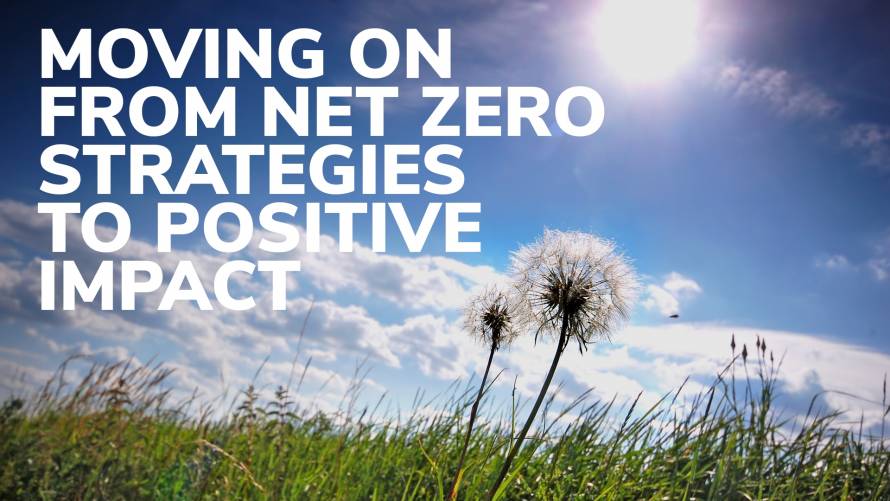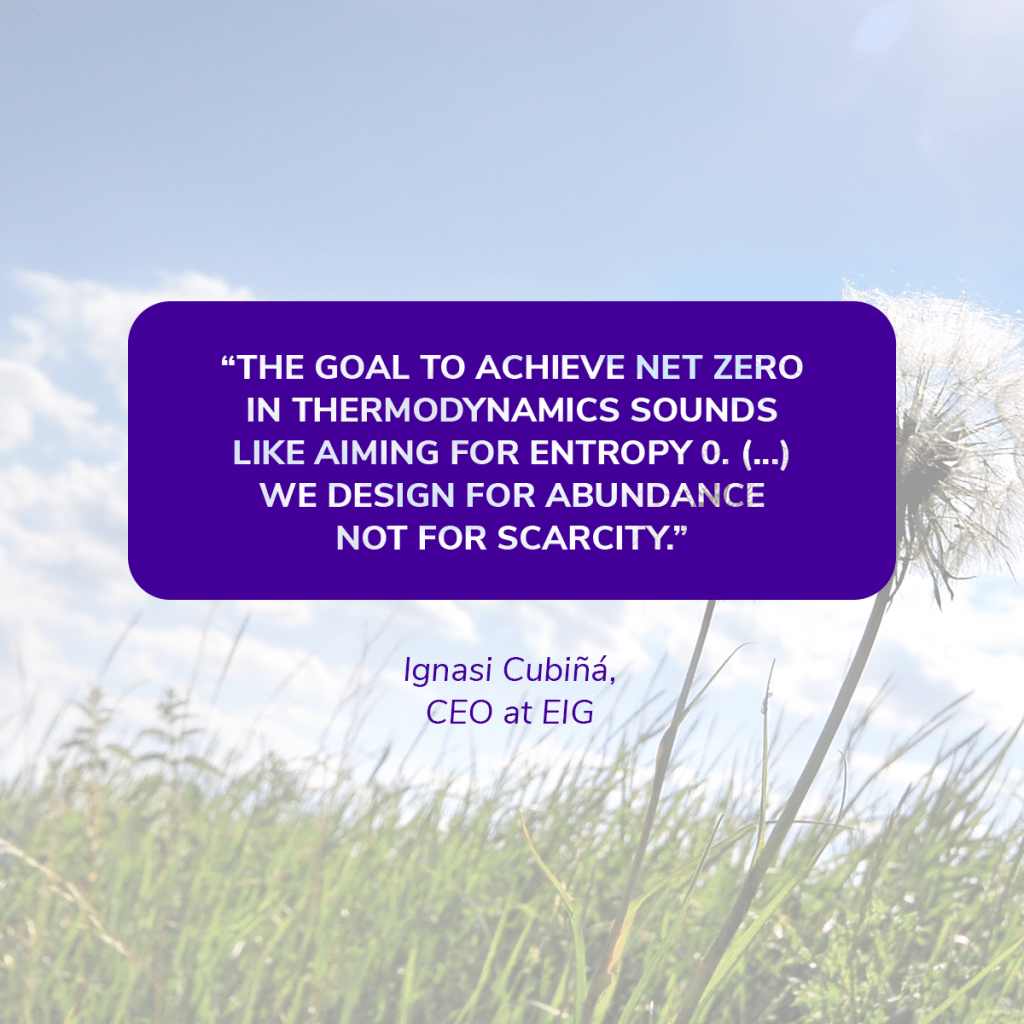
22 December 2021
Moving on from Net Zero strategies to Positive Impact
Greenhouse gasses emissions should continue dropping globally and be brought to zero around 2050
How fast are we moving to Net 0 emissions?
As stated in COP26, countries should pursue ambitious net zero strategies to achieve the zero emissions goal by 2050. But why is that so important?
Extreme weather events, contamination, biodiversity loss, toxicity, social inequality, waste generation or scarcity of resources are some of the negative externalities Ignasi Cubiñà, EIG’s President, enumerates to expose the situation we are facing because of a history of human activities that are poorly designed and managed.
In 2015, during COP21, 194 states and the EU agreed on limiting warming well below 2 °C above pre-industrial levels, and that all efforts would be put in place to limit it to 1.5. Neither governments nor the private sector have invested enough will or resources during these seven years, and we are stuck with the same pledge in a worse place.
Greenhouse gasses emissions should continue dropping globally and be brought to zero around 2050. The goal is to limit warming to this ideal 1.5°C above pre-industrial levels or as much as possible, because every bit of warming we can avoid lengthens the road to global collapse.
In this context, Net Zero pledges appeared and multiplied. Aiming zero might be not the best aspiration in terms of language, but it may work if the principles, criteria and metrics are well set and substantiated.
How are governments implementing net zero strategies to make a difference?
Although leading scientists are skeptical that governments will slow the pace of global warming and they expect the world to warm by at least 3°C by the end of the century, some policies are being put into place in what looks like an arm wrestling between private and public interests.
During COP26, the UK has unveiled the plan to incorporate an auditing system based on science. This would help prove that the net zero strategies of companies aren’t in fact greenwashing. Moreover, large firms in high-emitting sectors will be required to publish net zero transition plans by 2023. The first point is crucial because as Cubiñà explains: “The risk is the commoditization of the concept, making it a compliance strategy for companies, focusing solely on the consequences and not the causes. For example, companies that see it as a threat make communication and compliance strategies, in the short term, and without going into much depth. On the other hand, those who see it as an opportunity are rethinking their business model, the customer-supplier relationship, the resilience of their business ecosystem, and even the company’s own essential purpose. The main barrier to effective and long-term implementation of a Net Zero (or Net Positive) strategy is companies’ perception of return.”.
Private sector net zero strategies to reduce their CO2 emissions
In Pakistan, leading companies contributing to 8-10% of textile exports are joining the recently created Net Zero Pakistan Coalition. “It is the first country level net zero coalition in the global south”, says Talha Khan, Pakistan Environment Trust Executive Director, creating a national road map for getting to net zero. Through an annual fee member companies pledge to net zero strategies to reduce emissions by 2050 and receive mentorship, financing, and a unifying platform to interact globally.
For the big retail companies sourcing in Pakistan, it will be much more convenient because “rather than training ten different suppliers, you have one platform where you can train them all in one go”, says Khan.
The Swedish company Polestar is influencing the automobile industry, and boosting innovation, with its promise of delivering the first climate neutral car by 2030 without offsets, including everything except the use phase.
“For the Polestar 0 Project we need to get all the materials down to, or close to, zero. If there are materials that we can’t get reductions on, we can’t use them in this car and we need to look for other materials that can reach 0”, says Lisa Bolin, Polestar’s Climate Lead.
The objective of the brand is ambitious and visionary. “It is not only replacing materials but also looking at the whole system. We are trying to fulfill the functions of a car in a totally different way to reduce the number of materials and make it more resource efficient”, says Bolin. The requirement for Polestar 0 Project will generate requirements for suppliers (Tier 1) that will go beyond their own company and trickle down to tiers 2,3,4, etc.
At the same time, Polestar collaborates with their suppliers, especially with the battery ones, to track every piece of cobalt, nickel and manganese, using blockchain technology.
The company reports carbon according to the Greenhouse Gas Protocol and is also part of the Exponential Roadmap Initiative, a strict index because “they are very clear both with the kind of offsetting you aren’t allowed to use and how fast you need to reduce your emissions”, concludes Bolin.
Switching to a positive attitude towards carbon
“The goal to achieve Net Zero in thermodynamics sounds like aiming for Entropy 0, which means death, who wants to pursue that goal?”, asks Ignasi Cubiñà, “we design for abundance not for scarcity”.
At EIG we work to move towards a circular carbon economy, following William McDonough’s vision at “The New Language of Carbon”. We work to reduce negative emissions to air, preserve the carbon stored in products and materials, and promote its return to the soil to foster life. EIG puts its expertise in the C2C Cradle to Cradle circular economy, to help companies in their journey towards a better future for everyone, everywhere, everytime.
Our vision of Net Zero plans is to do no harm to other systems in a way that can be replicable and scalable based on a fundamentally good design and effective Implementation strategy. This is what EIG can offer when putting together Design for Circularity and the Implementation of a Positive Impact roadmap.
The ultimate goal is to go from Net Zero strategies to Positive Impact. In the end we all aspire to be Net Positive, don’t we?.
In future articles we will share the experience of Solitek, Interface, and Crescent Bahúman.
C2C Is a registered mark of MBDC, LLC.

